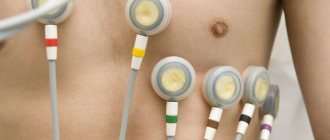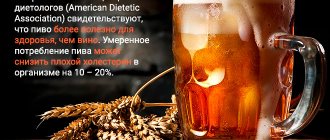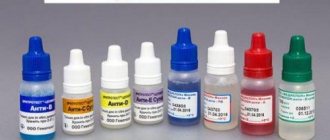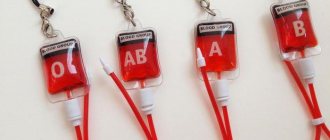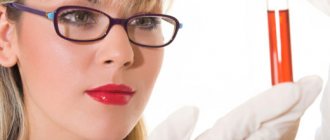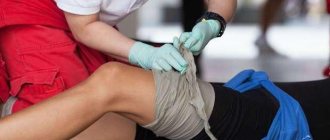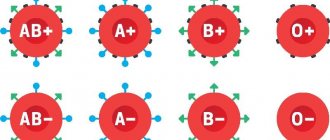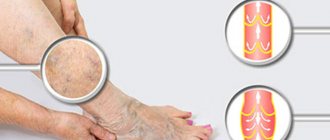Blood transfusion is widely used in modern medicine. As you know, when the bloodstream becomes empty, death occurs. Donor blood is necessary not only for large blood losses, but also for certain diseases. Thanks to blood transfusion, thousands of people can save lives and improve their health. The theory of blood compatibility appeared relatively recently - in the middle of the last century. Thus, it became possible to avoid the severe consequences of transfusion caused by incompatibility.
Blood transfusion is a serious procedure that requires strict adherence to certain rules. Incompatibility between the recipient and the donor can lead to serious consequences, that is, to the death of the patient. When inappropriate blood is transfused, red blood cells stick together (agglutination reaction) and are destroyed. Blood group compatibility is carefully checked before the procedure is performed.
How do you get 1 negative?
A child receives his genes from his parents. Blood type is determined by a combination of antigens. Based on possible chromosomal connections, we can confidently say that 1, which is negative in the prognosis of the occurrence of the group and Rhesus, is different.
The first group can form in the fetus:
- with 100% probability if both parents have it;
- with equal opportunity if one of the parents has the first group, and the other - the second or third.
A child with this indicator will never be born if one of the parents has the fourth group. This simple test is used in genetic consultations and forensic medicine in cases of disputed paternity.
Rhesus is an additional red blood cell antigen.
- It will definitely not be in the blood of a newborn if both parents do not have it.
- If the mother or father has Rh antigen, then the probability of having a child with Rh negative is 50%.
Carrying out a test
Before transfusion, a compatibility check must be carried out. About 5 milliliters of blood is taken from the intended donor, placed in the machine and special serum (one drop) is added. Then a few drops of the recipient’s blood and a drop of sodium chloride solution are dropped into it. After this, observation is carried out. If the adhesion of red blood cells has not begun, it means that the donor and recipient are compatible, and the transfusion can begin.
Another way to check for compatibility is to inject the patient with several milliliters of donor blood. After this, he is observed for three minutes. If nothing happens during this time, another small amount is injected. Only after making sure of compatibility, doctors begin the transfusion procedure. To minimize the possibility of complications, the recipient is transfused with only the necessary cells, not whole blood.
Advantages
A person who is first negative, due to the lack of antigenic properties, is considered the safest donor for blood transfusion. In the absence of the same group, in life-threatening situations, it can be transfused to people with any other blood, regardless of the presence or absence of the Rh factor.
Such transfusions are routinely prohibited.
According to some theories, the owners of this group are very strong-willed people who always strive to be leaders. They actually achieve their goal. The characteristic features are: increased emotionality, a developed sense of self-preservation. Such a person will not risk his health and calculates the result of his actions in advance.
Perhaps such a transfusion is indicated in this case
Transfusion rules
Blood transfusion requires compliance with the following rules:
- 1The blood type of the donor and recipient must match.
- 2Mandatory match for Rh factor.
- 3It is necessary to conduct compatibility tests on an individual basis.
- 4It is necessary to conduct a biological sample.
If these rules are not followed, the procedure may result in patient shock or even death.
Before transfusion, the donor's blood is checked and individual compatibility tests are performed.
Flaws
If a patient with the first group and negative Rh needs a blood transfusion, then only a similar donor will be suitable for him. Therefore, doctors advise such people to know which relatives have the same blood as them.
Typical diseases of people in this group are:
- stomach and duodenal ulcers;
- increased risk of hypertension;
- Hemophilia is more often found in men;
- tendency to damage the respiratory system by infections (ARVI, influenza, tuberculosis, pneumonia);
- there is a risk of gaining excess weight;
- allergic reactions are possible.
Too much strong-willed qualities can lead to narcissism, intolerance to any criticism and comments, and jealousy. Reduced endurance and inability to adapt to changing living conditions can cause a short-term fall.
Blood compatibility for conceiving a child
Before pregnancy, planning a child needs to be approached wisely. Reproduction specialists advise parents to determine blood compatibility in advance. The child’s inheritance of a certain set of qualities from each partner will depend on this, and checking Rh compatibility will help protect against hemolysis during pregnancy. If a woman is Rh-, and a man is Rh-positive, a Rh-conflict arises, in which the body perceives the fetus as foreign and begins to fight, actively producing agglutinins (antibodies) against it.
- What disability group is given for grade 3 knee gonarthrosis?
Rhesus conflict poses a danger not only for the expectant mother. Hemolytic disease can occur when positive and negative red blood cells react in the fetal bloodstream. Ottenberg's rule can determine whether conception will be successful based on blood type:
- it will help protect the couple by finding out what diseases can arise during conception and pregnancy;
- establish an approximate scheme of combination of a set of chromosomes during the formation of a heterozygote;
- guess what Rh factor the child may have;
- determine height, eye and hair color.
Compatibility table of blood groups and Rh factor
The ratio of the blood type of the father and mother determines the possible inheritance of qualities and genes by the child. Incompatibility does not mean the inability to get pregnant, but only indicates that problems may arise. Knowing in advance is better than finding out when it's too late. It is better to check with your doctor which blood groups are incompatible for conceiving a child. Compatibility table of blood groups and Rh factor:
| Blood type | 0(I)Rh+ | 0(I)Rh- | A(II)Rh+ | A(II)Rh- | B(III)Rh+ | B(III)Rh- | AB(IV)Rh+ | AB(IV)Rh- |
| 0(I)Rh+ | + | — | + | — | + | — | + | — |
| 0(I)Rh- | — | + | — | + | — | + | — | + |
| A(II)Rh+ | + | — | + | — | + | — | + | — |
| A(II)Rh- | — | + | — | + | — | + | — | + |
| B(III)Rh+ | + | — | + | — | + | — | + | — |
| B(III)Rh- | — | + | — | + | — | + | — | + |
| AB(IV)Rh+ | + | — | + | — | + | — | + | — |
| AB(IV)Rh- | — | + | — | + | — | + | — | + |
The probability of a child inheriting the Rh factor:
| Dad | Mother | Baby |
| Positive | Positive | 75% positive 25% negative |
| Positive | Negative | 50/50 |
| Negative | Positive | 50/50 |
| Negative | Negative | Completely negative |
Problems during pregnancy
Pregnancy for a woman with no Rh factor in her blood has the same consequences, regardless of her blood type. Gynecologists send both spouses to the laboratory to determine Rh.
The expected course of pregnancy may be complicated by an Rh conflict with the fetus if the child receives Rh-positive genes from the father. The first pregnancy is considered more favorable because the mother's immune system begins to reject the fetus only at the end of the term. The child is born with jaundice, liver dysfunction, and anemia. Such a baby is taken under control and receives timely treatment. With age he becomes completely healthy.
During a repeat pregnancy (even taking into account previous abortions), ready-made antibodies are present in the woman’s blood, and they begin to act on the fetus from the first weeks. This threatens miscarriage and disruption of the formation of internal organs.
Modern medicine has learned to combat this pathology by introducing anti-Rhesus globulin, which has the ability to bind and neutralize the effect of maternal antibodies. Rhesus negative women should take care of the future of their children.
ABO and RH system
The main blood classification is the AB0 system, which was discovered in the early 20th century. They are determined by the presence on the surface of red blood cells of specific antigens (agglutinogens) A and B. One of their tasks is to signal the presence of foreign elements, thereby causing an immune response in the body. The immune system does not react in any way to its own antigens, but when those that are not in the body appear, it mistakes them for enemies and begins to destroy them. The body produces antibodies (immunoglobulins) to foreign antigens, and as a result of their reaction, red blood cells stick together.
The set of antigens found on red blood cells determines membership in one group or another. In fact, doctors know about 400 antigens, and therefore there are quite a few classifications. However, the properties of most antigens are weakly expressed and are not taken into account during transfusion. During blood transfusions, the greatest attention is paid to the AB0 and Rh systems.
According to the AB0 system, blood is divided into four groups. The first has neither one nor the other antigen, the second has only A, the third has B, the fourth has both antigens - A and B. Natural antibodies (agglutinins) are present in the plasma - anti-A and anti-B (α and β ). Only opposite antigens and antibodies can be present in the blood. The first contains anti-A and anti-B, the second contains anti-B (β), the third contains anti-A (α), and there are no antibodies in the plasma of the fourth.
The table clearly demonstrates this.
| Group | Agglutinogen in red cells | Agglutinin in plasma |
| I | absent | anti-A and anti-B |
| II | A | anti-B |
| III | B | anti-A |
| IV | AB | absent |
According to the Rh system, blood can be Rh positive or Rh negative. This depends on the presence of a specific Rh factor antigen on the surface of red cells. If the blood of the donor and the patient belongs to the same group, but one is Rh-positive and the other is Rh-negative, incompatibility occurs.
Diet tips
In the last century, the theory of the dependence of nutrition on blood type was very popular. The Rh factor was not taken into account at all. It was believed that there were certain foods that were most important for a person with each blood type. They also pointed out unhealthy foods that pollute the body and contribute to the occurrence of diseases.
Here's someone who only ate meat
The origin of all people with the first group is genetically related to the first anthropoid individuals that did not have antigens in the blood. They hunted and ate only meat. Due to drastic environmental changes, it is impossible for today’s “hunters” to consume meat alone; they will also need other healthy products.
The diet was proposed to be followed throughout life. Although the theory has long been refuted by long-term research, it still has followers. Therefore, we present everything that concerns the first blood group.
What is possible
People with this trait are considered obese. A balanced diet requires limiting sweets and flour products.
- Dishes made from lean beef or lamb, fish, and seafood are shown.
- Porridge should be prepared only from whole grains (buckwheat is the most useful).
- You should give preference to dishes made from pumpkin, broccoli, spinach, seaweed with onions, and parsley.
- You can drink green tea, herbal teas, rosehip decoction.
Conventional recommendations will have to be taken critically
What not to do
It is not recommended to combine milk and meat dishes, especially pork, in a daily diet.
- Sausage, smoked meats, and fatty meats are prohibited.
- Dairy products and eggs.
- It is proposed to give up sour fruits and berries, olives, citrus fruits, oranges, tangerines, and strawberries.
- Oatmeal and semolina are limited.
- Butter, hard cheeses, ice cream, ketchup, and mayonnaise are considered contraindicated.
- Potatoes, legumes, cabbage.
- Black tea, coffee, orange juice, kefir and milk.
The theoretical foundations of nutrition based on blood type provide for a gradual transition to a strict diet and allow temporary relaxations. Some consider this approach the only rational way to lose weight or maintain weight and health.
Modern medicine does not approve of excesses in nutrition, but is also against strict vegetarianism. Food must contain all the necessary components, otherwise it will take a long time to restore the imbalance with medications.
How to determine blood type
To determine the blood group during transfusion, standard serum is taken and the blood being tested is dripped into it. This serum contains certain antibodies. The blood reaction occurs with antigens in the red blood cells. They are either similar to antibodies in serum or they are not. Red blood cells in different blood groups agglutinate with a certain serum, that is, they accumulate into a small mass.
- Example: to detect the third (B) and fourth blood group (AB), serum containing anti-B antibodies is used.
- For the second (A) and fourth (AB), serum containing anti-A antibodies is prepared.
- Blood group 1 (0) does not cause any reactions with any serum.
Blood group test
Compatibility of men and women
Since those with the fourth blood type are considered universal and at the same time unique, the perception of their intimate life is significantly different from other people. The fact is that girls and guys in this category love to receive great attention to themselves. Their chosen ones will also have to be different from other people in order to satisfy their “halves” and build a happy marriage.
It is worth noting that marital unions with people of the fourth type are often long-lasting. The carriers of this group are always attentive, caring, faithful and reliable, even if they marry the owners of the first or third groups. Due to such character qualities, strong and long-term families can be formed, especially among those couples who manage to give birth to healthy offspring.
( 1 ratings, average: 5.00 out of 5)
Story
The fourth blood group is the youngest and rarest. There are less than 10% of people with such indicators on Earth. People with AB indicators appeared on our planet about 1000 years ago. Today, there are several versions of why the blood suddenly changed its usual indicators.
Theory one. According to some scientists, the mixed group appeared as a result of interethnic marriages. It is believed that the first children with such indicators were born in marriages of Europeans and Mongols. Such unions were not possible before, and therefore the mixing of blood that gave such a group was not observed.
Theory two. Blood group AB is a protective reaction of the body. According to this theory, during times of widespread incidence of various viral infections, nature launched a protective mechanism by combining antigens A and B on the red blood cells of one person. Thus, the immune system was significantly strengthened, which made it possible to resist diseases such as measles, rubella, influenza, rabies and pneumonia.
However, this theory does not explain why there are so few people with these indicators.
Theory three. Diet. According to this theory, changes in blood composition are similar to mutations. Some geneticists argue that it was the emergence of new foods that provoked this mutation. In their opinion, chemically processed foods are to blame for the appearance of people with blood group 4. However, the fact of the small number of such people also does not fit into this hypothesis.
Fourth negative blood: characteristics of people
The influence of the fourth group is especially noticeable in terms of the behavior, temperament and health of its carriers. Owners of group 4 have strong immunity, but at the same time they have weak digestion. For this reason, people often become ill with infectious, viral pathologies that enter the body through the respiratory system or esophagus.
It is characteristic that the fourth blood group combines all the negative features of the first and second. It is known that this type is the youngest and not fully examined. It is worth noting that this blood has a remarkable ability to adapt to changes in diet. It was acquired during the process of human evolution. This trait makes it easy to lose weight and adapt to new diets.
Blood type 4 is Rh negative: this characteristic describes the difference between such people in their perception of the world. Carriers of this group have creative thinking, developed intellectual abilities, and a sharp mind.
Although AB (IV) carriers have a strong character, they are sometimes touchy, emotional, and whiny. This mainly depends on the people around you, parents, friends, and the team at work. When choosing a profession, such people give preference to the creative field of activity and art. They love games, intellectual pursuits, and pay attention to self-development.
Such people strive to be different from others, try to do something special, unusual.
However, the disadvantage of the character of the carriers of group 4 is considered to be emotional instability and vulnerability to insults. These people are sensitive to their defeats and bullying, so they are capable of falling into drug or alcohol addiction and even committing suicide.

